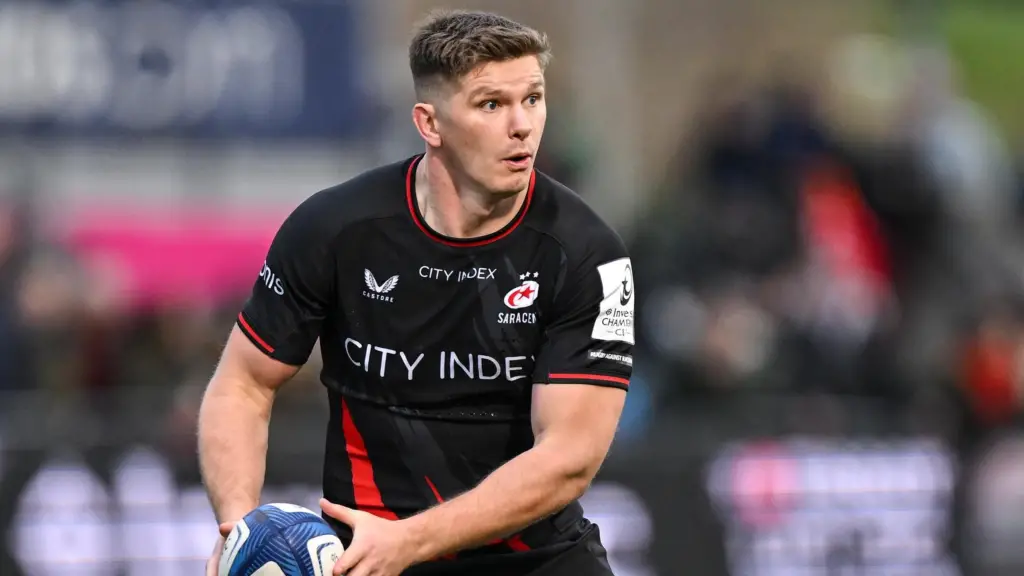Saracens Rugby Club, one of the most successful teams in English rugby history, has long been a powerhouse in the Gallagher Premiership and European competitions. Known for their strategic approach on the field and a roster filled with world-class talent, the club has also been at the center of financial scrutiny due to past salary cap breaches. In this article, we will explore Saracens’ salary structure, including the average salary, the highest and lowest earners, and the factors influencing their payroll.

Average Salary of Saracens Players
The average salary for a Saracens player is estimated to be around £200,000 to £250,000 per year. This figure is reflective of the club’s ability to retain top-tier talent and maintain a competitive edge in both domestic and European competitions. Saracens’ average salary is comparable to other top Premiership clubs like Leicester Tigers and Exeter Chiefs, though the club’s financial history makes their salary structure particularly intriguing.
Highest-Paid Players at Saracens
Saracens’ success has been built on a core group of world-class players, many of whom are among the highest-paid in English rugby. Here are some of the top earners currently at the club:
- Owen Farrell – As the team’s captain and one of the best fly-halves in the world, Farrell reportedly earns around £750,000 per year. His leadership, tactical prowess, and goal-kicking ability make him an invaluable asset to the team.
- Maro Itoje – The dynamic lock and England international is believed to earn approximately £700,000 annually. Itoje’s physicality, athleticism, and leadership qualities have solidified his status as one of the premier forwards in the game.
- Billy Vunipola – The powerful No. 8 is another key figure in the Saracens lineup, with a salary estimated at £500,000 per year. His ball-carrying ability and defensive prowess make him a cornerstone of the team’s pack.
- Jamie George – The England and British & Irish Lions hooker reportedly earns around ¤400,000 annually. His consistency and set-piece expertise are vital to Saracens’ success.
Lowest-Paid Players at Saracens
While the top stars command significant salaries, younger and less experienced players earn considerably less. Academy players and those on development contracts typically earn between £20,000 and £40,000 annually. These players benefit from the club’s comprehensive development programs, which include housing, meal allowances, and access to top-tier training facilities.
Factors Influencing Saracens’ Salaries
Several factors contribute to the salary structure at Saracens:
- Salary Cap Regulations The Gallagher Premiership enforces a salary cap to promote financial sustainability and competitive balance. The current cap is set at £5 million, with additional allowances for marquee players, academy credits, and injury dispensations. Saracens’ past breaches of these regulations led to a significant financial penalty and relegation, underscoring the importance of strict compliance.
- Player Value and Market Demand Established international players and British & Irish Lions command higher salaries due to their proven track records and marketability. Saracens’ ability to attract and retain such talent is a testament to their reputation and financial planning.
- Position and Role Certain positions, such as fly-half, lock, and No. 8, often carry higher salaries due to their strategic importance. Players like Owen Farrell and Maro Itoje exemplify this trend.
- Performance Bonuses and Incentives In addition to base salaries, players may receive performance bonuses for achievements such as winning the Premiership or Champions Cup, as well as individual accolades.
Comparison to Other Premiership Clubs
Saracens’ salary structure is comparable to other top Premiership clubs, but their past salary cap breaches have brought additional scrutiny. Clubs like Exeter Chiefs and Leicester Tigers also boast competitive salary budgets, though Saracens’ ability to maintain a roster of international stars sets them apart.
Financial Challenges and Strategies
- Rebuilding Trust Post-Salary Cap Breach Following their relegation due to salary cap violations, Saracens have worked to rebuild trust within the rugby community. Transparent financial practices and adherence to regulations are now central to the club’s operations.
- Retaining Key Players Despite financial constraints, Saracens have managed to retain core players by fostering a strong team culture and offering competitive contracts within the cap.
- Maximizing Revenue Streams The club leverages its strong fan base, commercial partnerships, and matchday revenues to support its financial operations. Initiatives like the development of their home ground, StoneX Stadium, have also boosted revenues.
Notable Former Players and Their Salaries
Saracens have been home to many rugby legends, several of whom commanded high salaries during their tenure:
- Chris Ashton – The prolific winger was one of the club’s top earners, reportedly making around £400,000 per year.
- Schalk Burger – The South African flanker, during his time at Saracens, earned an estimated £350,000 annually.
- Brad Barritt – The former captain and center was another high earner, with a salary of approximately £400,000 per year.
Future Outlook for Saracens Salaries
As Saracens continue to compete at the highest levels, their salary structure will remain a key focus. Moving forward, the club will need to:
- Maintain Compliance with the Salary Cap Strict adherence to salary cap regulations is essential to avoid further penalties and maintain their reputation.
- Invest in Youth Development Developing homegrown talent will allow Saracens to balance their budget while maintaining a high-performing squad.
- Adapt to Market Dynamics With increasing competition from overseas leagues such as Japan’s Top League and Major League Rugby in the USA, Saracens must remain competitive in their salary offerings to attract and retain top talent.
Conclusion
Saracens’ salary structure reflects their ambition to remain a dominant force in rugby while adhering to the financial realities of the modern game. By balancing competitive salaries for star players with strategic investments in youth development, the club is well-positioned to sustain its success. As they navigate the challenges of a regulated salary cap and an evolving rugby landscape, Saracens will continue to set a high standard both on and off the field.
